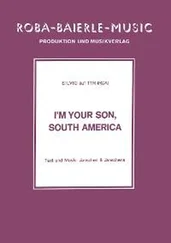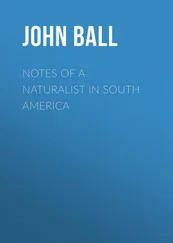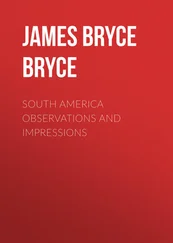The whipsnake, of a beautiful changing green, and the coral with alternate broad transverse bars of black and red, glide from bush to bush, and may be handled with safety; they are harmless little creatures.
The labarri snake is speckled, of a dirty brown colour, and can scarcely be distinguished from the ground or stump on which he is coiled up; he grows to the length of about eight feet, and his bite often proves fatal in a few minutes.
Unrivalled in his display of every lovely colour of the rainbow, and unmatched in the effects of his deadly poison, the counacouchi glides undaunted on, sole monarch of these forests; he is commonly known by the name of the bush-master. Both man and beast fly before him, and allow him to pursue an undisputed path. He sometimes grows to the length of fourteen feet.
A few small caymans, from two to twelve feet long, may be observed now and then in passing up and down the river: they just keep their heads above the water, and a stranger would not know them from a rotten stump.
Lizards of the finest green, brown, and copper colour, from two inches to two feet and a half long, are ever and anon rustling among the fallen leaves, and crossing the path before you; whilst the chameleon is busily employed in chasing insects round the trunks of the neighbouring trees.
The fish are of many different sorts, and well-tasted, but not, generally speaking, very plentiful. It is probable that their numbers are considerably thinned by the otters, which are much larger than those of Europe. In going through the overflowed savannas which have all a communication with the river, you may often see a dozen or two of them sporting among the sedges before you.
This warm and humid climate seems particularly adapted to the producing of insects; it gives birth to myriads, beautiful past description in their variety of tints, astonishing in their form and size, and many of them noxious in their qualities.
He whose eye can distinguish the various beauties of uncultivated nature, and whose ear is not shut to the wild sounds in the woods, will be delighted in passing up the river Demerara. Every now and then, the maam or tinamou sends forth one long and plaintive whistle from the depths of the forest, and then stops; whilst the yelping of the toucan, and the shrill voice of the bird called pi-pi-yo, is heard during the interval. The campanero never fails to attract the attention of the passenger: at a distance of nearly three miles you may hear this snow-white bird tolling every four or five minutes, like the distant convent bell. From six to nine in the morning the forests resound with the mingled cries and strains of the feathered race; after this they gradually die away. From eleven to three all nature is hushed as in a midnight silence, and scarce a note is heard, saving that of the campanero and the pi-pi-yo; it is then that, oppressed by the solar heat, the birds retire to the thickest shade and wait for the refreshing cool of evening.
At sun-down the vampires, bats, and goat-suckers dart from their lonely retreat, and skim along the trees on the river’s bank. The different kinds of frogs almost stun the ear with their hoarse and hollow-sounding croaking, while the owls and goat-suckers lament and mourn all night long.
About two hours before daybreak you will hear the red monkey moaning as though in deep distress; the houtou, a solitary bird, and only found in the thickest recesses of the forest, distinctly articulates, “houtou, houtou,” in a low and plaintive tone, an hour before sunrise; the maam whistles about the same hour; the hannaquoi, pataca, and maroudi announce his near approach to the eastern horizon, and the parrots and parroquets confirm his arrival there.
The crickets chirp from sunset to sunrise, and often during the day, when the weather is cloudy. The bêterouge is exceeding numerous in these extensive wilds, and not only man, but beasts and birds, are tormented by it. Mosquitos are very rare after you pass the third island in the Demerara, and sand-flies but seldom appear.
Конец ознакомительного фрагмента.
Текст предоставлен ООО «ЛитРес».
Прочитайте эту книгу целиком, купив полную легальную версию на ЛитРес.
Безопасно оплатить книгу можно банковской картой Visa, MasterCard, Maestro, со счета мобильного телефона, с платежного терминала, в салоне МТС или Связной, через PayPal, WebMoney, Яндекс.Деньги, QIWI Кошелек, бонусными картами или другим удобным Вам способом.
The negroes of the West Coast of Africa, as I am informed by Dr. Kodjoe Benjamin William Kwatei-kpakpafio, of Accra, take their names from the day of the week on which they are born: Quashi (Kwasi) is Sunday; Kodjoe, Monday; Koffie, Tuesday.—N. M.
“Natural History Essays,” by Charles Waterton, edited, with a life of the author, by Norman Moore (Warne and Co.).












